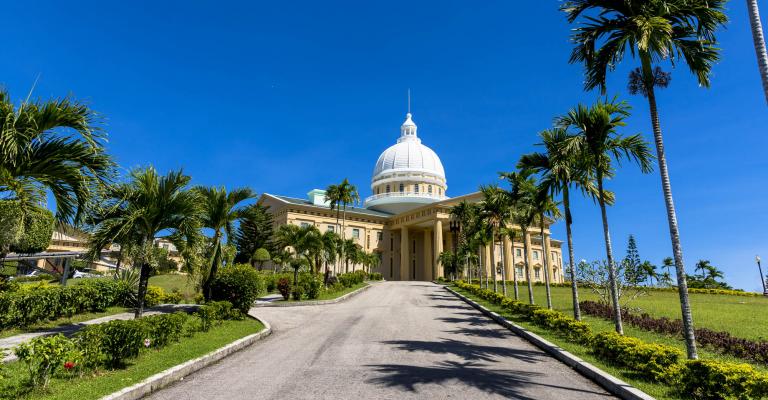mchec.org – The Republic of Palau, an island nation located in the western Pacific Ocean, boasts a unique political system that blends modern governance with traditional practices. This article explores the structure of the Palauan government and its constitution, providing insights into how the country operates.
Government Structure
Palau operates under a presidential system, where the president serves as both the head of state and the head of government. The president is elected by the people for a four-year term, and the vice president is elected on the same ticket. The executive branch includes various ministries, all of which are appointed by the president.
The legislative branch is bicameral, consisting of a Senate and a House of Delegates. The Senate has 13 members, while the House of Delegates has 16 members, all elected for four-year terms. The Senate has more power, including the authority to propose and approve presidential candidates.
The Constitution
The Constitution of Palau, adopted in 1979 and revised in 1992, serves as the supreme law of the land. It outlines the fundamental rights of citizens, the structure of the government, and the principles of governance. The constitution is divided into 15 articles, covering various aspects such as territory, sovereignty, citizenship, and fundamental rights.
The preamble of the constitution emphasizes the inherent sovereignty of the Palauan people and their right to self-governance. It also acknowledges the divine guidance of Almighty God in the establishment of the republic.
Traditional Influence
Despite the modern structure of its government, Palau maintains a strong connection to its traditional practices. The Council of Chiefs, known as the Ibedul and Reklai, plays a significant role in the political landscape. These chiefs hold considerable influence and are considered equal in status to the president.
Political Status
Palau gained independence from United States trusteeship in 1994, but it remains under a Compact of Free Association with the United States. This agreement allows Palau to maintain its sovereignty while receiving financial and technical assistance from the U.S.
Conclusion
The political system of Palau is a fascinating blend of modern democracy and traditional governance. The constitution, with its emphasis on fundamental rights and the separation of powers, ensures a stable and democratic government. The influence of traditional leaders, such as the Ibedul and Reklai, adds a unique layer to Palau’s political landscape.
Understanding the intricacies of Palau’s government and constitution provides a deeper appreciation of the country’s political culture and its commitment to self-governance and democratic principles.

